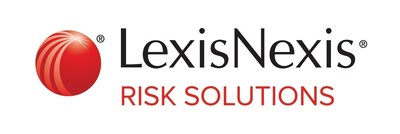Subject: SVY
LexisNexis Risk Solutions UBI Whitepaper Uncovers Key Lessons For Auto Insurers
ATLANTA, March 12, 2018 /PRNewswire/ -- LexisNexis Risk Solutions today released a new whitepaper, Usage-Based Insurance Adoption: Understanding consumers' wants and needs is the driving force. The whitepaper reveals key insights into how auto insurers and original equipment manufacturers (OEMs) can work together to increase usage-based insurance (UBI) adoption rates. By recognizing the insights from the LexisNexis® Telematics Usage-Based Insurance Study, insurers and OEMs can deliver valuable, customer-friendly vehicle features that help their shared customers be safer drivers and save money, while opening the door to new business opportunities.

"As proven with the rise of digital personal assistants in their homes, Americans are becoming increasingly comfortable using connected technology and digital tools that make day-to-day task completion easier," said Tanner Sheehan, Senior Director of Auto Insurance, LexisNexis Risk Solutions. "Consumers' desire for connectivity in lifestyle and home will extend to cars as well, presenting significant opportunities for insurers and OEMs who are willing to invest in connected services today."
For auto insurers to accelerate UBI adoption and enhance their partnership with OEMs, the LexisNexis Telematics whitepaper offers five key recommendations to auto insurers:
1. Understand the customer
Drivers indicate that they'd like more control, ownership and customization of their advanced driver assistance systems (ADAS) and connectivity features. Half of consumers say they'd be more interested in vehicle connectivity if they knew it acted as a mechanism for collecting their UBI driving data. Insurers who understand their customers have more opportunities to design UBI programs that appeal to their specific audience.
2. Know the customer's vehicle
While drivers generally recognize the benefits of ADAS and connectivity, one third of ADAS owners and half of connected car owners have already, or would like to disable some aspects of these features, revealing that drivers want the ability to choose which features they want to use. OEMs that allow consumer-friendly configurability of features while minimizing distraction will succeed.
3. Increase awareness of UBI to accelerate adoption
Regardless of whether a car buyer specifically shopped for ADAS or connectivity features, the majority of drivers who own cars with these features say that they see many benefits. Similarly, the research found that while half of drivers who are offered UBI chose to enroll in it, only one in five said they were offered UBI by their insurer. LexisNexis experts believe OEMs and insurers alike can benefit from consumer receptivity to telematics.
4. Promote what customers value most ? safety and savings
Drivers consider safety to be a top benefit of both ADAS and connected car features, followed closely by the opportunity to save money, and the two go hand-in-hand; safer driving can result in lower insurance rates through UBI. As a result of ADAS and connectivity becoming standard features on new cars, half of new car buyers recognize that these can improve safety, and they expect to have lower car insurance premiums as a result. Promoting these features can drive both UBI adoption and vehicle sales.
5. Make it easy to manage privacy and security
Seven out of ten consumers cite privacy as their primary concern with ADAS and connectivity features delivering data for UBI. Insurers and OEMs, therefore, must make managing privacy and security a top priority. According to LexisNexis experts, as connected car features become more intertwined with UBI, insurers and OEMs that offer transparency and convenience in their programs will be less likely to encounter these privacy concerns.
"Collecting real-time telematics data and customer feedback provides auto insurers with the unique opportunity to collaborate with OEMs to identify and promote the telematics capabilities, customization options and UBI programs that are most appealing and deliver true value to consumers," said David Lukens, Director, Telematics and Global Products, LexisNexis Risk Solutions. "Collaboration between these two industries is key to delivering vehicle-embedded services that will benefit their shared customer and, as a result, foster greater UBI adoption."
While the opportunity to accelerate UBI adoption through embedded technology is encouraging, it will take time for these features to fully penetrate the car park. In the meantime, the challenge will remain for insurers to institute device-agnostic telematics platforms to take in data from multiple data sources, normalize it and make it available throughout the insurance lifecycle. Ultimately, through the continued insurer and OEM partnership, connected vehicles will prove their value by improving safety, reducing insurance rates, and making drivers' lives easier.
For more information, download the LexisNexis Risk Solutions Understanding consumers' wants and needs is the driving force whitepaper.
About the Research
LexisNexis Risk Solutions hired a third party research firm to conduct an online survey and collect feedback from a representative sample of consumers considered to be "in the auto market". The firm completed 3,018 interviews among consumers who have purchased a new car within the last two years or indicated plans to purchase a new car within the next five years. In order to obtain a holistic view of the current landscape, results from the online survey were analyzed alongside findings from a LexisNexis Risk Solutions internal research on the performance of ADAS and connected car features.
About LexisNexis Risk Solutions
At LexisNexis Risk Solutions, we believe in the power of data and advanced analytics for better risk management. With over 40 years of expertise, we are the trusted data analytics provider for organizations seeking actionable insights to manage risks and improve results while upholding the highest standards for security and privacy. Headquartered in metro Atlanta USA, LexisNexis Risk Solutions serves customers in more than 100 countries and is part of RELX Group, a global provider of information and analytics for professional and business customers across industries. For more information, please visit https://risk.lexisnexis.com/
Media Contacts:
Rocio Rivera
LexisNexis Risk Solutions
Phone: +1.678.694.2338
[email protected]
Mollie Holman
Brodeur Partners for LexisNexis Risk Solutions
Phone: +1.646.746.5611
[email protected]
SOURCE LexisNexis Risk Solutions
These press releases may also interest you
|
News published on and distributed by:



